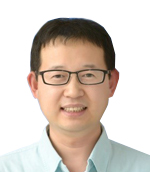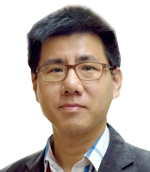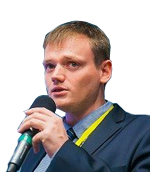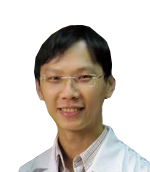Last page update:
THE 2018 ASPIRE NOMINEES
The APEC Science Prize for Innovation, Research, and Education (“ASPIRE”) is an annual award sponsored by Wiley and Elsevier that recognizes young scientists who have demonstrated a commitment to excellence in scientific research and collaboration with scientists in the region. This year, ASPIRE received 13 nominees contributing to the ASPIRE theme of smart technology for healthy societies.

AUSTRALIA
Dr Bhaskaran’s work transforms the way we imagine, use, and interact with electronic devices and sensors. Published in over 130 peer reviewed publications, she has developed ways to combine functional oxide materials processed at high temperatures with elastic and plastic materials. Her work has led to the development of wearable elastic electronics and sensors including gas and UV sensors and flat optical devices—all of which are stretchable, optically transparent and as thin as a nicotine patch. An example of an application includes the development of devices to detect dangerous gases in mines that contribute to skin cancer. |
||||||

CANADA
Dr Fuller’s research involves designing healthier cities by using mobile health technologies such as wearable devices, mobile phones, machine learning, and geographic information science to increase physical activity. He works closely with cities and local community organizations to evaluate the impact of existing interventions such as bicycle share programs, bridge construction, and snow clearing on physical activity. Dr Fuller has published over 40 peer reviewed articles. |
||||||

CHILE
Dr González studies the virus herpes simplex-2 (HSV-2), a virus that currently affects about 500 million people for which a vaccine is not available. Dr González has worked with at least five human pathogens and published more than 50 articles. Through his research, he has developed a fast, affordable, and easy-to-use diagnostic kit to detect viral infections for different tissues that can be used in rural areas. |
||||||

CHINA
Dr Liu researches aging, organ and tissue homeostasis, and aging-associated diseases. Through his work, he has discovered therapeutic interventions to allow for the “healthy aging” of human stem cells. Published in over 80 publications and prestigious journals, Dr Liu’s work continues to enhance the study and treatment of disorders related to aging. |
||||||

INDONESIA
Dr Hudaya researches affordable smart energy storage technology for healthy societies, especially those living in remote and isolated areas. His two main projects include 1) a portable energy storage device used with an infant incubator, serving premature infants; and 2) a smart monitoring system installed in a laptop enabling nurses to communicate in remote, off-grid areas. Dr Hundaya has published over 15 articles in peer reviewed journals. |
||||||

KOREA
Dr Kim researches and develops novel electric materials for use in wearable devices, including activity monitor bracelets, smart watches, and GPS enabled shoes. In 2007, as published in Science, he was the first to expand upon the relationship between electric materials and electronic device performance. He has published 75 articles in peer reviewed scholarly publications and his research is used to develop the core technology for new wearable technologies, leading to more real-time applications that can support meaningful improvements to health outcomes. |
||||||

MALAYSIA
Dr Mohd Setapar focuses her research on micellar nanotechnology, a cutting-edge technology used in skincare and cosmetics to improve the effectiveness of the skin cleansing process and enhance the absorption capacity of cosmetic ingredients into the skin. She has commercialized a range of cosmetic and skincare products through her university spin-off company and published over 50 peer reviewed articles. Dr Mohd Setapar’s mission is to empower Malaysian women with safer, high-quality cosmetic products and to make available high-value cosmetics combining micellar nanotechnology with local natural extracts at lower prices. |
||||||

PHILIPPINES
Dr Jiz researches schistosomiasis, a disease caused by parasitic worms that is second only to malaria as the most devastating parasitic disease. Published in more than 15 articles, Dr Jiz develops vaccines for schistosomiasis and has patented a large scale production of a solution for the body to induce immunity against the disease. |
||||||

RUSSIA
Dr Voitenkov focuses his work on understanding neurology and functional diagnostics, especially in the aging process. He has published in over 20 journals and studies the rare disease, inflammatory polyneuropathy (Guillain-Barré syndrome), where the body’s immune system attacks your nerves, paralyzing a person’s entire body. |
||||||

SINGAPORE
Dr Daniel Shu Wei Ting focuses his work on screening techniques for diabetic retinopathy, an eye disease for people with diabetes, which can lead to loss of vision. He has led a large research team in building the world’s first artificial intelligence system using deep learning to detect three potentially blinding conditions and has published in over 40 peer reviewed publications. |
||||||

CHINESE TAIPEI
Dr Pan specializes in human physiology and mouse models of neurological disorders. His work is focused on discovering novel ways to measure brain physiology for movements which have implications for Parkinson’s disease, essential tremor, and cerebellar ataxic disorders. Dr Pan also has invented smart technology to identify the most common movement disorders affecting 20% of the elderly population and has published in 14 peer reviewed publications. |
||||||

THAILAND
Dr Chaovalitwongse focuses his research on data analytics in medical and healthcare applications, especially in analyzing brain activity to predict and monitor epilepsy. Through his work, he has developed solutions for problems caused by attention deficit/hyperactivity disorder, Alzheimer’s disease, Parkinson’s disease, non-small cell lung cancer, sarcoma, and esophageal cancer and has published in over 185 scholarly publications. |
||||||

UNITED STATES
Dr Spiller focuses her research on the design of “smart” biomaterials that can control the behavior of immune cells to promote tissue repair and wound healing. She has developed a point-of-care diagnostic to tailor optimal treatment for patients based on the state of their immune system according to factors such as age, genetics, and nutrition and has published in over 40 peer reviewed publications. |

